The Healthiest Dog Foods are those that provide complete and balanced nutrition, tailored to your dog’s specific needs, and recommended by veterinary professionals, and larosafoods.com offers a wide variety of options to meet those needs. By choosing wisely and staying informed, you can ensure your furry friend thrives. For more insights, explore larosafoods.com’s resources on canine nutrition, optimal pet health, and diet management.
1. How Do I Pick The Best Dog Food?
When choosing the best food for your dog, consider whether it’s nutritionally complete and balanced and if you’re giving your dog the right portions based on their size and weight. According to the World Small Animal Veterinary Association (WSAVA), it is crucial to check the nutrition adequacy on the label. Equally important is researching the brand to know who is involved in formulating and manufacturing the food and if the company routinely analyzes its finished products. Brands that invest in research and have veterinary nutritionists on staff are more likely to provide high-quality diets.
- AAFCO Standards: Ensure the food meets AAFCO nutrition standards, as indicated by the nutritional adequacy statement on the label. This guarantees the product is intended to be a sole diet and is nutritionally balanced.
- Ingredients and Palatability: Focus on the nutrients your dog gets from the ingredients. The ingredient list should display all ingredients from highest to least amount by weight, helping you determine if the formula is vegetable or meat-based.
- Nutritional Value and Proportions: Check the food’s energy density (kcal per cup, can, or ounce) and feeding guidelines. Monitor your pet’s weight using the Body Condition Score to ensure they stay within a healthy range.
- Dog’s Size, Weight, and Life Stage: Match your dog’s food to their life stage. Small breeds can switch to adult food at seven to nine months, while larger breeds typically switch at 12 to 14 months. Also, consider breed-specific formulas if available.
2. What Should I Consider When Selecting Dog Food In 2025?
When selecting dog food in 2025, it’s essential to focus on factors like life stage, specific health needs, and ingredient quality to ensure your furry friend gets the best nutrition. Experts emphasize the importance of choosing food that meets AAFCO standards and is appropriate for your dog’s age, size, and activity level. According to larosafoods.com, a balanced diet contributes significantly to a dog’s overall health and longevity.
Here are some top dog food options available in 2025:
| Food | Key Features |
|---|---|
| Hill’s Science Diet Puppy Small Bites Dry Dog Food | Small-sized kibble, supports overall puppy health, easy to digest; formula with natural omega-3 fatty acids from fish oil for brain development |
| Purina Pro Plan Adult Sensitive Skin & Stomach Dry Dog Food | Easy to digest, novel proteins, no wheat, soy, or corn; formula with high-protein salmon, probiotics, and prebiotic fiber |
| Royal Canin Small Breed Adult Dry Dog Food | Crunchy texture, multiple kibble sizes, resealable bag; specific to dog sizes, breeds, and dietary restrictions |
| Merrick Grain Free Real Salmon & Sweet Potato Dry Dog Food | Novel proteins, good for allergies, small kibble size; great for dogs with sensitive stomachs or allergies to common proteins |
| Purina Pro Plan Sport Performance Salmon & Cod Dry Dog Food | Maintains healthy weight, good for picky eaters; glucosamine and omega-3 fatty acids to maintain joint health and mobility |
| The Farmer’s Dog Subscription Dog Food | Delivers to your home, custom formula, easy to store; meal delivery comes with portions based on age, weight, breed, activity level, and build |
| Purina Pro Plan Large Breed Adult Dry Dog Food | Maintains healthy weight, large kibble size, good value for size; prebiotic fiber for digestive health, omega-6 fatty acids and vitamin A |
| Royal Canin Adult Gastrointestinal Canned Dog Food | Great for sensitive stomachs, low-fat, maintains gut health; prebiotics to maintain good bacteria in the gut, omega-3 fatty acids from fish oil |
| Just Food For Dogs Fish & Sweet Potato | Locally sourced produce, lasts a long time, easy to store; pouches of high-protein food with low-calorie count, great for overweight dogs |
| Kirkland Signature Adult Formula Chicken, Rice and Vegetable Dog Food | Good source of protein, promotes joint health, budget-friendly; probiotics to maintain digestive health, glucosamine and chondroitin |
| Hill’s Science Diet Adult Sensitive Stomach & Skin Canned Dog Food | Good for several sensitivities, high moisture content, can mix with dry food; formulated for dogs with sensitive stomachs |
| Purina Beneful Prepared Meals Beef & Chicken Medley | Dogs love the flavor, resealable container, can serve on its own; veggies, chunks of real beef, real chicken and rice |
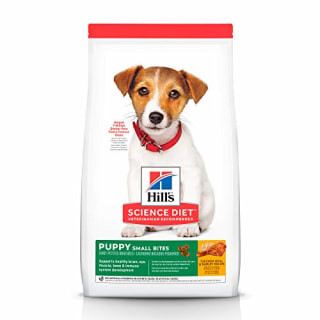
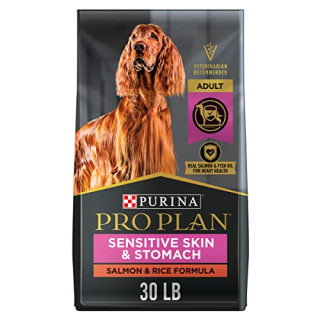
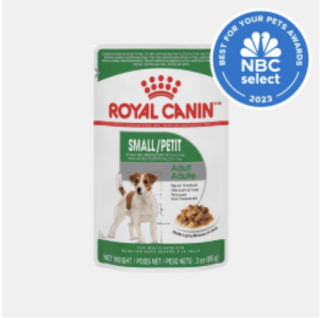
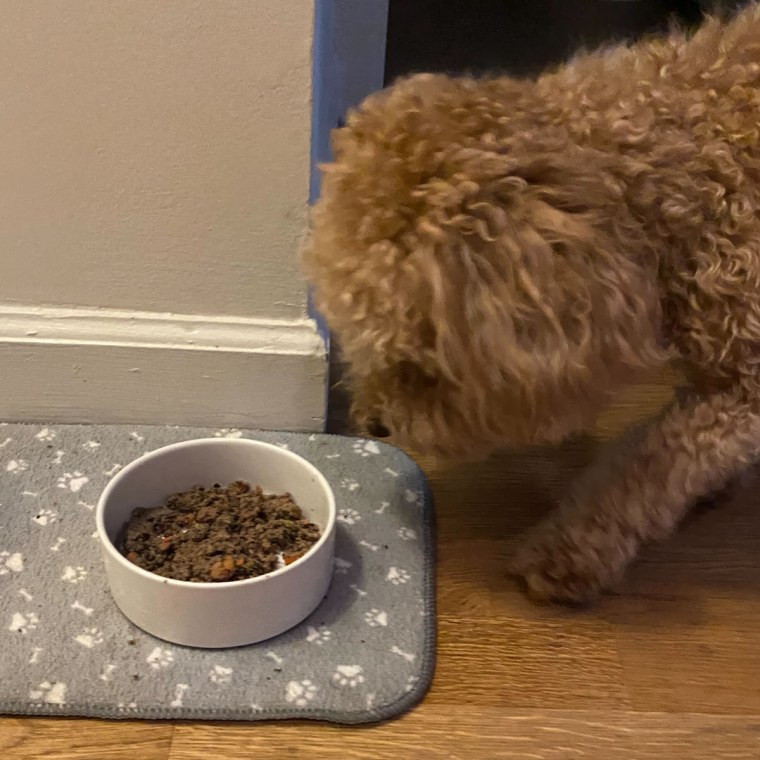

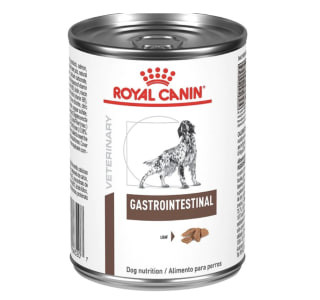
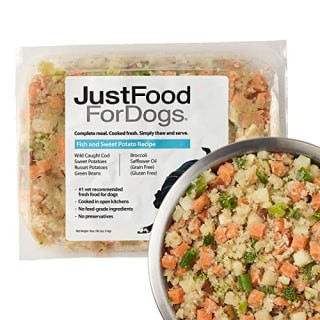
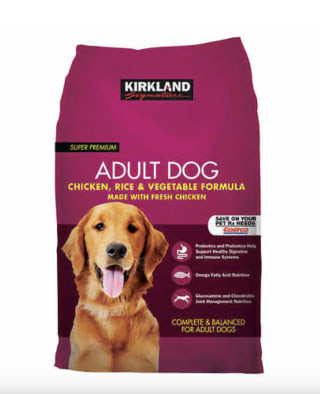
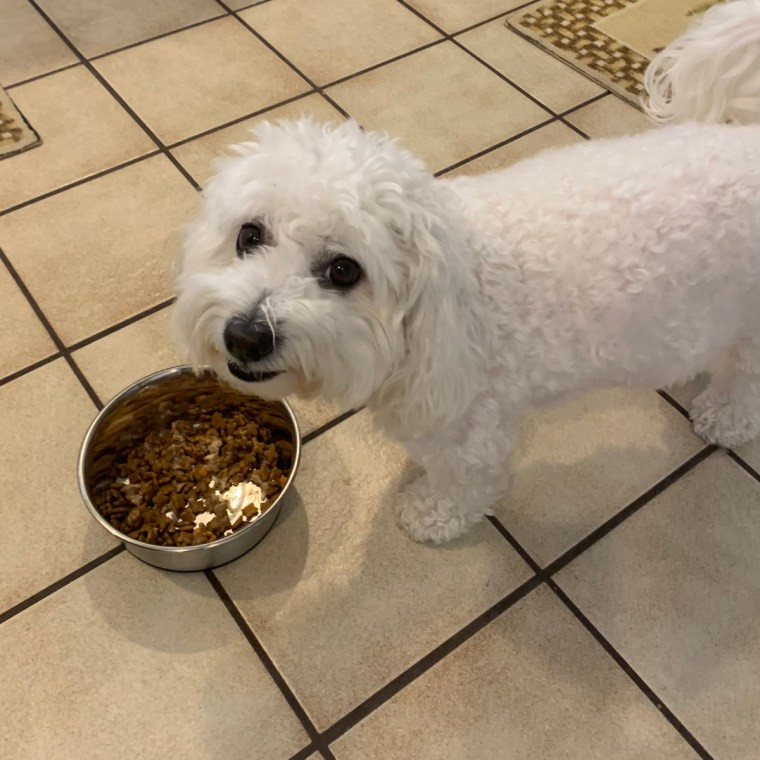
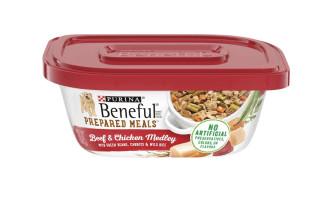
3. Which Dog Food Is Best For Puppies?
Hill’s Science Diet Puppy Small Bites Dry Dog Food is best for puppies because it has small-sized kibble that supports overall puppy health and is easy to digest. The formula includes natural omega-3 fatty acids from fish oil, which promote healthy brain and eye development, and a vitamin E and vitamin C blend to support a healthy immune system. According to Hill’s, this food is designed for puppies up to 1 year old and provides a balanced diet that supports their growth and development.
4. What Dry Dog Food Do Experts Recommend For Sensitive Stomachs?
Purina Pro Plan Adult Sensitive Skin & Stomach Dry Dog Food is highly recommended by experts for dogs with sensitive stomachs because it is easy to digest and contains novel proteins. This formula does not include corn, wheat, or soy, making it easier for dogs with intolerances to digest. The food features high-protein salmon and includes probiotics and prebiotic fiber for digestive and immune health, along with omega-6 fatty acids to support healthy skin and coat.
5. What Is The Best Overall Dog Food?
Royal Canin Small Breed Adult Dry Dog Food is considered the best overall dog food due to its diverse options and breed-specific formulas, which are designed to meet the unique dietary needs of small dogs. The kibble is made for small dogs aged 10 months to 8 years, weighing between nine and 22 pounds. Royal Canin offers both dry and wet food options specific to dog sizes, breeds, and dietary restrictions, including food sensitivities and gastrointestinal issues. It also has dry food formulas for extra-small, medium, large, and giant breeds, as well as puppy formulas.
6. Which Dog Food Is Best For Active Dogs?
Purina Pro Plan Sport Performance Salmon & Cod Dry Dog Food is the best choice for active dogs because it helps maintain a healthy weight and is suitable for picky eaters. This dry food is specifically formulated for active adult dogs and contains glucosamine and omega-3 fatty acids, which help maintain joint health and mobility. According to Purina, it has a ratio of 30% protein and 20% fat to keep their energy levels high. It is available in several flavor combinations to fit your dog’s preferences, including turkey, duck, and quail, salmon and cod, and beef and bison formulas.
7. What Should I Know About Subscription Dog Food?
The Farmer’s Dog Subscription Dog Food is a popular choice due to its convenience and customization. This subscription plan delivers fresh, ready-to-eat dog food to your door, with meal portions tailored to your dog’s age, weight, breed, activity level, and build. Before placing an order, you fill out a questionnaire, and the brand calculates a plan that fits your dog’s caloric and nutritional needs. The food pouches can be stored in your fridge or freezer and last up to four days in the fridge after thawing.
8. Which Dog Food Is Ideal For Large Breeds?
Purina Pro Plan Large Breed Adult Dry Dog Food is ideal for large breeds because it is formulated to maintain a healthy weight and has a large kibble size suitable for bigger dogs. The formula contains natural prebiotic fiber for digestive health and omega-6 fatty acids and vitamin A for skin and coat health. According to the brand, Purina employs veterinary nutritionists to determine healthy formulations and ingredients, ensuring that their Pro Plan dog food is geared toward dogs of different sizes and life stages, including large-breed adults and puppies.
9. What Is The Best Canned Wet Dog Food Available?
Royal Canin Adult Gastrointestinal Canned Dog Food stands out as the best canned wet dog food, particularly for dogs with gastrointestinal issues or sensitive stomachs. This low-fat option requires veterinary approval and includes prebiotics to support beneficial gut bacteria, dietary fibers to aid digestion, and omega-3 fatty acids from fish oil to soothe the GI tract. Royal Canin offers other options for various concerns, such as weight loss, digestive care, and joint care, all requiring veterinarian approval.
10. What Frozen Dog Food Options Are Recommended?
Just Food For Dogs Fish & Sweet Potato is a highly recommended frozen dog food because it provides a balanced diet with high-protein and low-calorie content. It is an excellent option for dogs who may be overweight or don’t get regular exercise. The meals are made with locally sourced produce and include only one source of protein for a limited ingredient diet. It provides a balanced diet for dogs with sensitive stomachs or those needing a novel protein due to allergies.
11. What Are The Healthiest Dog Foods For Digestive And Joint Health?
For digestive and joint health, Kirkland Signature Adult Formula Chicken, Rice and Vegetable Dog Food is a great option. This dry dog food contains probiotics to maintain digestive health, as well as glucosamine and chondroitin to support healthy joints. The food includes chicken, whole-grain brown rice, and vegetables, making it a palatable and nutritious choice for many dogs. According to reviews, it is particularly well-tolerated by dogs with sensitive stomachs.
12. What Wet Food Is Best For Dogs With Sensitive Stomachs?
Hill’s Science Diet Adult Sensitive Stomach & Skin Canned Dog Food is the best wet food for dogs with sensitive stomachs. It helps add moisture and texture to a dog’s meal, and its turkey and rice stew recipe is often a favorite. The brand also offers salmon and chicken recipes.
13. What Prepared Wet Dog Food Do Vets Recommend?
Purina Beneful Prepared Meals Beef & Chicken Medley is a vet-recommended prepared wet dog food. Vets suggest it can be mixed with a dog’s dry food or served on its own. The stew contains veggies, real beef chunks, chicken, and rice. It’s also a fully balanced meal, allowing it to be served as a dog’s main meal while adhering to the dog’s recommended portion size.
14. What’s The Difference Between Wet And Dry Dog Food?
The main difference between dry and canned dog food is its water content. Kibble is about 10% water, while canned food is upwards of 70% water. Roberts suggests that if both products have the same ingredients and only the water content differs, it’s okay to mix the wet food with your dog’s dry dog food, especially if they often get picky about their food or need an extra boost of hydration. According to experts, dry food is more economical and stable if stored in its original container in a dry location, compared to wet food, which perishes at room temperature after opening.
15. What Dog Food Ingredients Should I Avoid?
The main ingredient to avoid that’s commonly seen in commercial pet food is garlic powder. Garlic is a palatant, which means it’s designed to make the food taste better, but it can have health risks. Onions, raisins, grapes, and sugar-free additives are also toxic to dogs, though most commercially prepared food won’t contain these ingredients. According to Michael, you should also avoid dog foods heavily laden with dyes, which often give the food a more consistent and visually appealing color.
16. Are Grain-Free Diets Good For My Dog?
A grain-free formula is made without wheat, barley, rye, and corn, and it’s commonly fed to dogs with a gluten intolerance. However, a grain-free diet isn’t better for your dog — and feeding them grain-free kibble can sometimes prevent them from getting their appropriate daily nutritional intake. Actual cases of true gluten intolerance in dogs and cats are quite rare. According to Roberts, the ingredients aren’t just filler ingredients. Carbohydrates, and corn especially, provide calories, extra fiber for better digestion, important vitamins and minerals, and antioxidants.
17. Should I Feed My Dog A Raw Food Diet?
Experts advise against a raw diet because the AVMA discourages feeding dogs any animal-source protein that has not first been subjected to a process to eliminate pathogens because of the risk of illness to cats and dogs as well as humans. If your pet is eating a complete and balanced commercially available pet food, supplements are not recommended unless specifically prescribed by your veterinarian.
According to experts, raw meat-based diets can produce a higher risk of microbial pathogens, antibiotic resistance genes, and other anti-nutritional factors. There are many harmful parasites and bacteria that can contaminate raw diets, which may not only harm your dog but may be transmitted or shed by your dog and cause harm to you and your family. This also goes for freeze-dried meat products that typically get mixed in with kibble as “boosters.”
18. Are Dog Food Toppers Healthy?
Dog food toppers or boosters, including canned pumpkin, blueberries, and bone broth, are mixed into your pet’s food to make it taste better, which can be good for picky eaters. However, you should use toppers as a last resort if they’re not eating their regular food, and you certainly shouldn’t add them to their meal every day because it can cause your dog to only want to eat that type of food. If your dog is eating a complete and balanced commercially available pet food, toppers are not recommended unless specifically prescribed by your veterinarian.
19. What Should I Do If My Dog Is Gaining Weight?
The first thing to address if you notice your dog is gaining weight or shifting out of an ideal Body Condition Score range is the type and amount of foods they’re getting on a daily basis. That includes whether your dog is getting table scraps or other treats, if they’re being fed by more than one member of the household, and if they’re sneaking into a housemate’s food in addition to their own food.
The next step is to discuss the weight gain with your dog’s veterinarian. According to Michael, they may want to look at diagnostic tests to determine if an underlying disease process could be contributing to the issue, or if perhaps a weight management food is a better food option for the pet.
20. How Much Food Should I Feed My Dog?
There is no specific figure for the amount of food you should feed your dog — the number of calories your dog needs per day depends on a few factors, including their breed, weight, and size. Most dogs have different needs — all of the experts recommend paying a visit to your vet and talking through your dog’s specific caloric needs.
Finding the healthiest dog foods requires careful consideration of various factors, including nutritional completeness, life stage, and individual health needs. Reputable brands like Hill’s Science Diet, Purina Pro Plan, and Royal Canin offer formulas that meet AAFCO standards and are developed with veterinary expertise. It’s essential to consult with a veterinarian to determine the best diet for your dog.
For more information on selecting the best dog food and ensuring your pet’s optimal health, visit larosafoods.com. Explore our resources for detailed guides, expert advice, and a wide range of nutritious options to keep your furry friend happy and healthy. You can reach us at 1 S Park St, San Francisco, CA 94107, United States, or call +1 (415) 987-0123.

